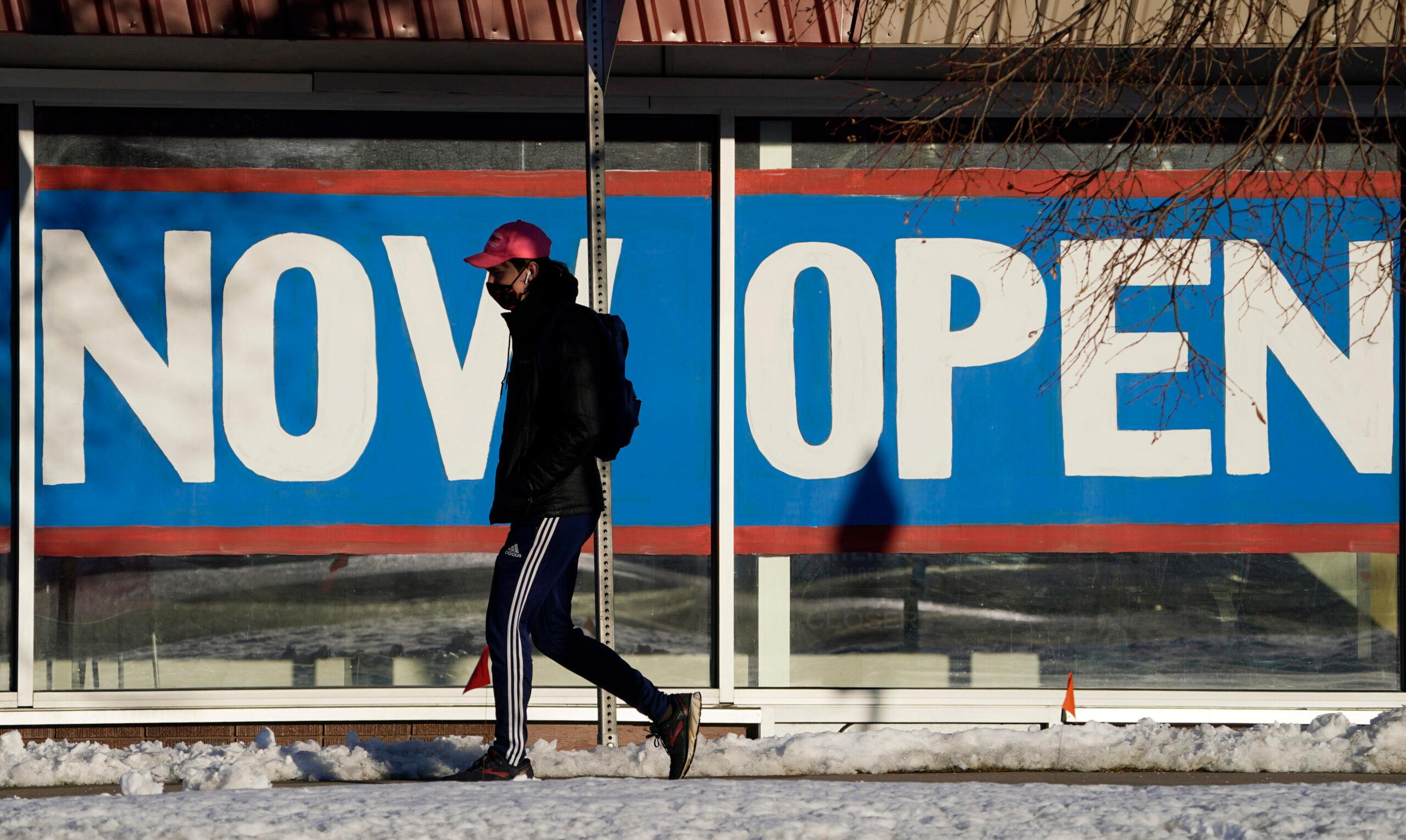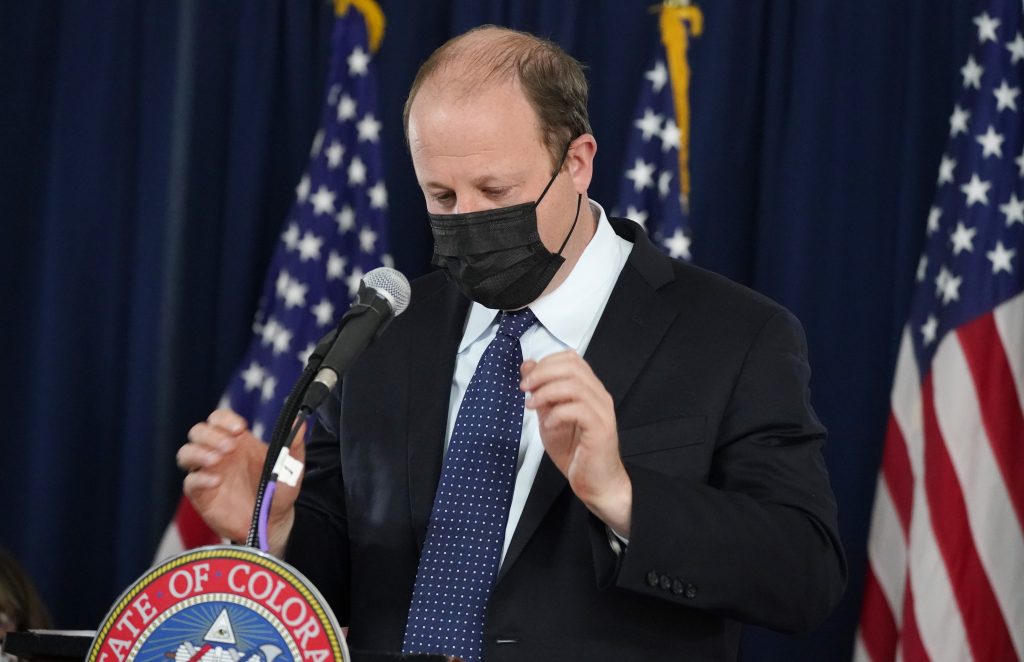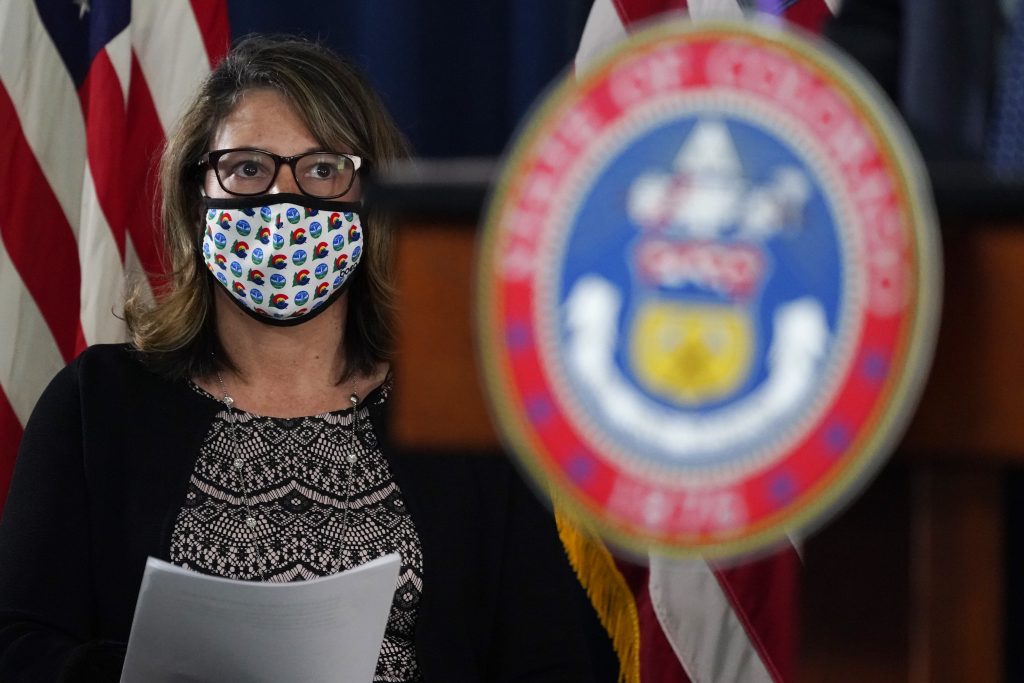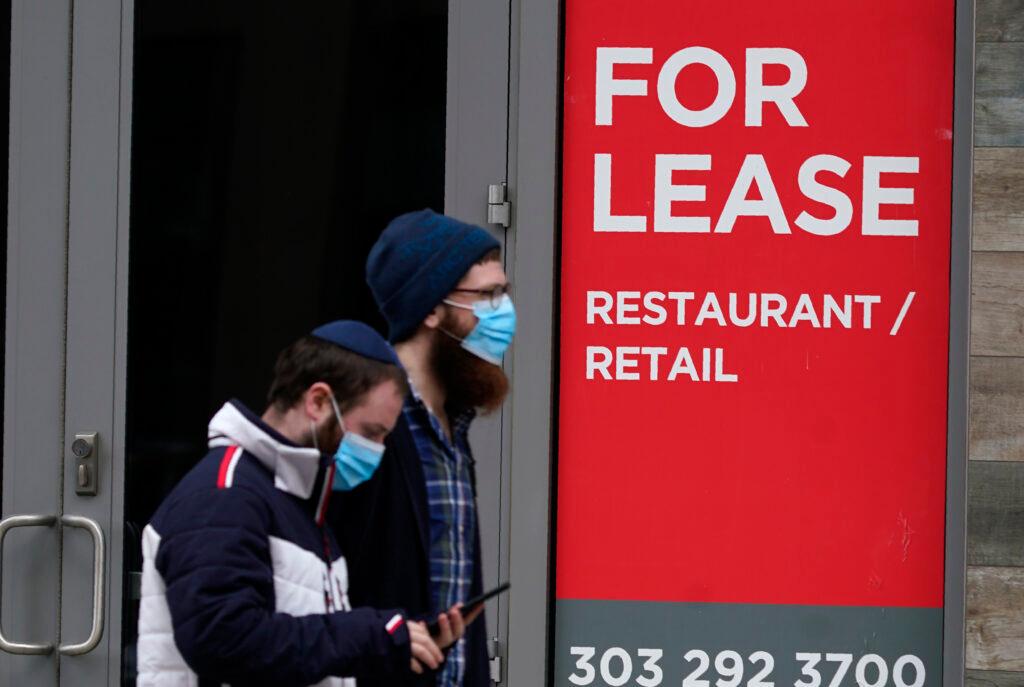
Local public health departments will take over management of much of Colorado’s coronavirus response Friday when the state is expected to move on from day-to-day oversight of restrictions. At the same time, the familiar color-coded dial system will be retired.
The effort will create a hodgepodge of approaches, with many Denver metro-area counties, as well as rural resort counties, banding together in regional groups to collaborate, pool resources and share messaging. Most counties with the lowest current incidence rates, now at “Level Green” on the state dial, are set to drop restrictions altogether along with the whole notion of a dial.
The move comes amid mixed signs from key pandemic indicators. Cases remain persistently high and the state’s positivity rate is above the worrisome 5 percent threshold. Hospitalizations, though much lower than the fall surge, are parked above 400, and more transmissible variants continue to spread and are now estimated to make up the majority of cases in Colorado.
But vaccinations continue to speed up, with nearly a third of Coloradans having had a first shot and roughly a quarter fully vaccinated. And within a month those numbers are expected to be much higher, even though the distribution of the Johnson & Johnson vaccine push is now on pause while federal regulators examine some rare but serious possible side effects.
Six public health agencies serving the seven-county Denver metro area — and representing 60 percent of the state’s population — plan to collaborate through the Metro Public Health Coalition to slow COVID-19. Those include agencies serving Boulder, Broomfield, Denver, Jefferson County and at least two of the three counties served by Tri-County Health.
That agency plans to keep its own version of the state dial, allowing residents to know where their county stands in its response to the virus.
“The dial will be retained,” said Dr. John Douglas, Jr., executive director of Tri-County, which serves Adams, Arapahoe and Douglas counties. “We’re expecting to have some sort of dial.”
The state’s withdrawal allows local public health agencies to respond to local conditions, but it also risks a scattershot approach, with varied rules and messages cropping up, said Dr. John Swartzberg, a clinical professor emeritus and expert in infectious diseases at the UC Berkeley School of Public Health.
“You’re going to get a balkanized system,” said Swartzberg, who has seen California and other states wrestle with similar dynamics. “I can imagine you're going to see very different health policies coming out of the southern part of your state, then Denver and its environs, and that's going to create confusion and frustration. It sort of winds up pitting one group against another.”
In recent weeks, some local public health leaders have called on the state to hold off on the dial transition for another month, saying models from the Colorado School of Public Health Modeling Team show that delaying policy changes until mid-May would prevent additional deaths and hospitalizations. The models show the numbers are worse as measures get lifted, especially if residents see the pandemic as over and ignore health warnings.

At a briefing for reporters Tuesday, Gov. Jared Polis said he was confident it was time to let decisions about the response be made at a local level.
“We fully support regional coordination,” Polis in the update, where he discussed the dial transition which he said would “empower our communities to take the strongest steps they can to protect people from COVID infection.”
At the same time, state public health officials acknowledge that the state, like much of the nation, is entering a “fourth wave” of infection and that we are now in a race to get enough people vaccinated before the virus continues to mutate its way through new hosts.
“We're at a pivotal point in the pandemic,” said Jill Hunsaker Ryan, executive director of the Colorado Department of Public Health and Environment. She noted that 1.3 million people in Colorado are now fully vaccinated, and the state has nearly 1300 vaccine providers giving shots in Colorado, “but the pandemic is certainly not over yet.”
Mobility is at its highest levels since the pandemic began and “infections are increasing in Colorado,” she said.

When pressed about why the state was moving to dissolve the statewide dial at what many public health experts see as a precarious point, Polis sidestepped the question. He said “the number of cases and hospitalizations will sadly continue to go up before it goes down. And we want that to be as short a peak as possible, and we want to get the numbers down.”
The governor said he had “full confidence” in local public health agencies to make decisions balancing “economic public health and epidemiological public health.”
Some statewide restrictions remain in place for now. Even in counties with low infection rates, face coverings will still be required in schools, child care centers, at personal service providers like hairdressers or barbers and in public-facing areas of government buildings. Those restrictions will likely be reviewed again by Polis in early May.
Douglas said he knows the pandemic has not yet run its course.
“Given the uncertainty of the variants, we're not quite out of the woods. We're not quite through the tunnel yet,” said Douglas, who joined the governor at his news update to discuss the handoff.
Douglas said the “core strategy” of the metro coalition was a two-step process. First, that group would move to the next less restrictive level on the current dial for the next month. Then in mid-May, those counties would move to “what we call the Clear Level, which means that all local restrictions will be lifted, capacities back to normal.”
Then the second phase starts, which Douglas called an “observation period,” in which “full reopening” will be reinstated, but counties could be moved back higher up to more restrictive levels on the dial should hospital admission rates head into worrisome territory.
He called this a “smart approach,” which would allow for one more month of vaccinations as well as creating predictability and consistency across the Denver metro.
Signs of a splintering response are already clear. Douglas County’s board of commissioners said Monday they would consider a resolution to opt-out of Tri-County’s framework, which will go into effect on Friday, April 16. Mesa County on the Western Slope has also signaled it’s ready to move on from the dial and its restrictions.
When asked what it plans to do, a spokeswoman for El Paso County’s health department said it was awaiting more details from the state.
Many counties with the lowest COVID-19 metrics, now represented by Green Level, are expected to abandon the dial and its restrictions.
“I fully expect that we will have agencies who will completely drop the dial,” especially those now at the lowest dial setting, said Sarah Lampe, the interim executive director of the Colorado Association of Local Public Health Officials.
In many ways, the impact of the shift away from state control is symbolic rather than practical. Though the state public health orders and the color-coded dial got plenty of attention, and offered guidance to residents, the restrictions were rarely enforced, and some counties announced long ago that they would no longer follow them. They suffered no consequences.
Between now and Friday, metro coalition partners who haven't done so already will issue local orders that extend a modified dial framework for an additional 30 days. That means in those communities many restrictions and rules aimed at limiting the spread of the virus will remain in effect.
In a press release, the coalition said the push will include “proven mitigation strategies” like requiring face coverings indoors and keeping indoor distancing requirements. The effort also will allow for “modifications to simplify guidance and minimize unnecessary burden” on community partners, businesses, schools, and residents. The group also noted “county-specific orders may outline required capacity limits” for various businesses and activities.
“We are not done with this fight,” said Dawn Comstock, the executive director of Jefferson County Public Health, noting all the counties in the metro area have coronavirus incidence levels that still require restrictions. “It's just not reasonable to completely open our societies back up with no restrictions, with no efforts to control spread of COVID in our communities.”

Mountain resort communities too are looking to join forces, with the state stepping back.
“We are trying to coordinate with other rural resort communities as much as possible,” said Jon Peacock, Pitkin County manager, who said his county would stick with the color-coded system, and the varying restrictions that go with it. “It’s our intention to stick with the state dial through the end of May, May 27.”
With many visitors to high country through spring, Pitkin struggled a bit with higher case numbers in recent weeks, but Peacock expects things to settle down with ski season wrapping up and mud season here. The county's numbers have been trending down in recent days.
“We remain concerned about the spread and impacts of COVID and, and that's why we're choosing to stick with the restrictions for a little bit longer to give time for vaccines to work and hopefully limit the spread of variants in particular.
One group watching the transition carefully are Colorado’s restaurants, which have been hit hard by the pandemic. Restrictions have hampered capacity, at the same time many people have avoided many indoor public gatherings.
Sonia Riggs, the president and CEO of the Colorado Restaurant Association, said her members have been all over the board regarding their views of the dial and restrictions.
“We are a bit concerned with what this is going to look like,” she said, with counties developing different approaches and the potential for confusion.
“The positive thing about this, which I think is the overarching feeling, is that we're moving towards things getting back to normalcy,” Riggs said. “And I think this is just one more step in that direction.”
Douglas said the big picture for Colorado is one of gradually improving conditions, as long as vaccinations continue apace and variants don't race out of control.
“I say in the metro area, the off-ramp is one month of additional capacity restrictions, more and more vaccinations happen, variants don't create unexpectedly bad headaches and we get back to fully reopened in the middle of May,” he said, noting “we've got a framework in case things get bad.”
Still, he stressed personal behavior is just as critical as ever.
“If you're not vaccinated, you do need to be careful. We may continue our mask mandate for a little while longer than (mid-May),” he said. That could “sort of give us an extra insurance policy. It's one of the least economically impactful things, is to mandate masks.”
Polis noted, despite the dial change, “large-scale sporting events remain under state supervision,” and that any large indoor gatherings of more than 500 would require a variance working with local public health agencies. And he said a statewide mask order remains in effect in the state’s most populous counties.
Polis said he believes the fourth wave of the pandemic would be the final one, and not as deadly as previous waves. But he urged the continued wearing of masks and avoiding crowded indoor settings.
The virus “is still a risk to you,” Polis said. “The risk to you of getting COVID is the same as it was. The risk to society, to hospital capacity, is less, but the risks to the individual are the same.”









